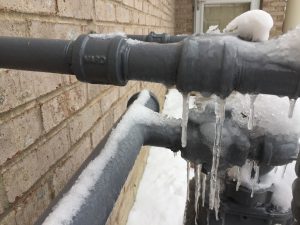Tips to Protect Your Plumbing from Freezing: Key Advice
Tips to Protect Your Plumbing from Freezing: Key Advice
Blog Article
Do you find yourself searching for resources around 6 Ways to Prevent Frozen Pipes?

Winter can damage your plumbing, especially by freezing pipes. Right here's just how to avoid it from taking place and what to do if it does.
Intro
As temperatures decrease, the threat of icy pipelines rises, possibly leading to expensive repair services and water damages. Comprehending how to stop frozen pipes is crucial for property owners in chilly climates.
Comprehending Frozen Pipes
What creates pipes to ice up?
Pipelines freeze when revealed to temperatures listed below 32 ° F (0 ° C) for prolonged durations. As water inside the pipelines ices up, it expands, taxing the pipeline wall surfaces and possibly creating them to burst.
Risks and damages
Icy pipes can result in supply of water interruptions, building damage, and expensive repair work. Burst pipes can flooding homes and create comprehensive structural damage.
Indicators of Frozen Pipes
Recognizing icy pipes early can prevent them from breaking.
Exactly how to recognize icy pipelines
Try to find decreased water circulation from taps, unusual odors or noises from pipes, and noticeable frost on subjected pipes.
Avoidance Tips
Protecting prone pipelines
Wrap pipelines in insulation sleeves or use heat tape to shield them from freezing temperatures. Concentrate on pipelines in unheated or external locations of the home.
Heating methods
Keep interior rooms properly warmed, particularly locations with plumbing. Open up cabinet doors to permit cozy air to distribute around pipes under sinks.
Shielding Outdoor Plumbing
Yard pipes and outdoor faucets
Disconnect and drain garden pipes before winter. Mount frost-proof faucets or cover outdoor faucets with shielded caps.
What to Do If Your Pipelines Freeze
Immediate activities to take
If you think frozen pipes, keep taps open up to alleviate stress as the ice melts. Use a hairdryer or towels taken in hot water to thaw pipes gradually.
Long-Term Solutions
Architectural modifications
Think about rerouting pipes far from exterior walls or unheated locations. Add extra insulation to attic rooms, basements, and crawl spaces.
Updating insulation
Purchase premium insulation for pipelines, attics, and walls. Proper insulation helps preserve regular temperature levels and minimizes the risk of frozen pipes.
Verdict
Preventing frozen pipes needs aggressive measures and quick reactions. By comprehending the reasons, indications, and safety nets, homeowners can protect their plumbing throughout winter.
5 Ways to Prevent Frozen Pipes
Drain Outdoor Faucets and Disconnect Hoses
First, close the shut-off valve that controls the flow of water in the pipe to your outdoor faucet. Then, head outside to disconnect and drain your hose and open the outdoor faucet to allow the water to completely drain out of the line. Turn off the faucet when done. Finally, head back to the shut-off valve and drain the remaining water inside the pipe into a bucket or container. Additionally, if you have a home irrigation system, you should consider hiring an expert to clear the system of water each year.
Insulate Pipes
One of the best and most cost-effective methods for preventing frozen water pipes is to wrap your pipes with insulation. This is especially important for areas in your home that aren’t exposed to heat, such as an attic. We suggest using foam sleeves, which can typically be found at your local hardware store.
Keep Heat Running at 65
Your pipes are located inside your walls, and the temperature there is much colder than the rest of the house. To prevent your pipes from freezing, The Insurance Information Institute suggests that you keep your home heated to at least 65 degrees, even when traveling. You may want to invest in smart devices that can keep an eye on the temperature in your home while you’re away.
Leave Water Dripping
Moving water — even a small trickle — can prevent ice from forming inside your pipes. When freezing temps are imminent, start a drip of water from all faucets that serve exposed pipes. Leaving a few faucets running will also help relieve pressure inside the pipes and help prevent a rupture if the water inside freezes.
Open Cupboard Doors
Warm your kitchen and bathroom pipes by opening cupboards and vanities. You should also leave your interior doors ajar to help warm air circulate evenly throughout your home.

As a fervent reader about Preventing and dealing with frozen pipes, I figured sharing that post was valuable. For those who enjoyed reading our post please do not forget to share it. I love reading our article about Helpful Tips to Prevent Frozen Pipes this Winter.
Call Today Report this page